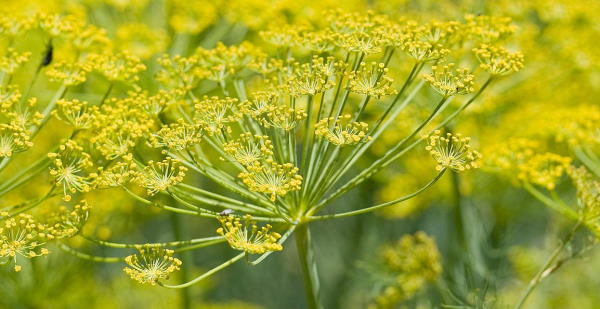Roman empire and its successor Byzantine Empire ruled Anatolia for more than a millennia. Romans left their cultural marks in Asia Minor but also they brought plants from distant lands which are common growing everywhere in modern Turkey. Let’s have look at the list of some Plants the Roman Empire Gifted to Asia Minor.
Fennel
Fennel, thought to come from Southern Europe and the Mediterranean regions, is a medicinal herb with a mild but distinctive licorice aroma and scent. In addition to its use in kitchens, fennel is used effectively in medicine too. Fennel is rich in vitamins A and C, and fennel has many beneficial minerals such as sodium, calcium, potassium, magnesium and phosphorus.

Mulberry
Today in Turkey there are 2.13 million mulberry trees that bear fruit. Mulberry trees are one of the greatest legacies left to us by the Romans. Mulberry is full of various nutrients and vitamins that the body needs. It is known that the Romans ate mulberry at their banquet. Although there was evidence of attempts to preserve mulberry in wine and honey, it failed. Mulberry is thought to have been grown in Roman towns and gardens to be ready for consumption right after being picked.
Greater Celandine
Belonging to the poppy family, Greater Celandine can grow 30-80 centimeters in length. Greater Celandine is known to be itching. Celandine has yellow colored leaves. In Anatolia, the yellow liquid coming out of the stalk of the Greater Celandine grown in the Black Sea and Marmara Regions is toxic. It is stated that Swallowtail, which is seen as a healing plant, has dozens of benefits known to humans.
Ground Elder
Ground Elder plant was consumed in the Middle Ages, its young leaves were just like we cook spinach today. In addition, the flower parts were plucked before they opened and mixed with vegetables and onions to be used in the preparation of a traditional Anatolian soup. Its fresh leaves were used in vegetarian dishes too. Growth areas of Ground Elder include Australia, Japan, North America and New Zealand, in addition to European and Asian countries.
Buxus (Boxwood)
The Buxus or better to be known as boxwood is a woody ornamental tree that grows slowly. It is shade-tolerant, loves to grow in moist nutrient-rich soils, its flowers are difficult to see, and produce fruits that resemble currants. It is also grown as an ornamental tree in the gardens. It is mostly like a bush with dense branches.
Hire Tour Guide in Turkey
Turkey and its flora offers far more than what is told in this article. Contact me to learn more on Turkish flora and to hire a recommended tour guide in Turkey. See you soon, Hasan Gülday